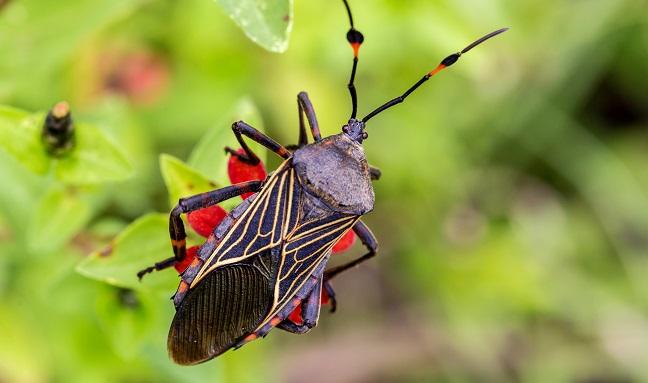AHA Scientific Statement Aims to Raise Awareness of Chagas Disease and Risk for Cardiomyopathy
As the parasitic illness continues to grow in non-endemic areas, the AHA hopes to raise awareness among physicians unaccustomed to seeing it.

Chagas disease, caused by the parasite Trypanosoma cruzi, is commonly known as a tropical disease. But in the past 40 years—due to increased globalization—it has travelled around the world to areas where physicians may not be familiar with the symptoms it causes, the cardiac sequalae, and how to treat them. A new scientific statement issued by the American Heart Association (AHA) and the Inter-American Society of Cardiology aims to provide an update on the current clinical knowledge of the disease as well as to alert physicians to its global spread and treatment.
Approximately 30% of individuals infected with Chagas disease experience cardiac rhythm problems, myocardial abnormalities, aneurysms, and thromboembolism. The Centers for Disease Control and Prevention estimates that about 300,000 people with Chagas are living in the United States, with the majority hailing from endemic areas.
“Many immigrants that come to the United States don't know they are infected,” said Maria Carmo Pereira Nunes, MD, PhD (Federal University of Minas Gerais, Belo Horizonte, Brazil), lead author of the statement, which was published online August 20, 2018, ahead of print in Circulation. Increasing awareness about the disease among providers from non-endemic areas will help with accurate diagnosis, she told TCTMD, noting that patients are often misdiagnosed with other kinds of cardiac disease, “and actually it's Chagas disease.”
Early identification of Chagas allows providers to initiate medication and therapies that can potentially cure the disease and prevent the progression of cardiac symptoms, she added.
Decreasing Prevalence, but Wider Range
According to Nunes and colleagues, global prevalence of Chagas disease has steadily decreased for the past three decades. In 1990, an estimated 18 million people worldwide were infected, but that number dropped to 8 million by 2005, and is now around 6 million. While there may be fewer cases, the disease is casting a wider net, now affecting residents of many nonendemic areas, like Europe, Japan, Canada and the United States, the authors note.
“As globalization continues, healthcare providers and health systems outside of Latin America need to be equipped to recognize, diagnose, and treat Chagas disease and to prevent further disease transmission,” they write. “Indeed, transmission of T. cruzi is not confined to endemic countries only, but also occurs in nonendemic countries through various nonvector pathways, including blood transfusion, congenital transmission, and organ transplantation.”
Individuals who were born in, lived in, or visited an area endemic to Chagas disease may be at greater risk of infection. Residents in the southern United States, especially in rural areas, may also be vulnerable.
Nunes and her colleagues hope that by raising awareness in nonendemic areas, they can help improve care and prevent misdiagnosis.
“Whereas patients living in Latin America are by far the largest population affected, those living outside of Latin America are part of a highly vulnerable immigrant population, often without access to consistent-quality medical care. Compounding the healthcare inequality, these patients are often cared for by providers with little knowledge of Chagas disease,” the authors say. “High-quality epidemiological research and investment in provider education are urgently needed to improve the recognition of and care for Chagas disease outside of Latin America.”
Challenges for the Future
Triatomine bugs, commonly known as the “kissing bug,” are vectors for T. cruzi. The disease is endemic to Latin America, though some vector-borne cases have also been documented in the southern United States.
The acute phase of Chagas, which generally lasts for a couple of weeks after initial infection, can feel like the flu, Nunes said. Patients can also experience swelling, rashes, and swollen glands. If left untreated by medications, the disease can progress to a chronic state. Though the majority of individuals (60-70%) remain asymptomatic, some can develop Chagas cardiomyopathy. The authors say predicting who will progress to heart disease is an ongoing challenge and a high-priority area for research.
“Although some develop only conduction defects and mild segmental wall-motion abnormalities, others develop severe symptoms of heart failure, thromboembolic phenomena, and life-threatening ventricular arrhythmias,” the authors write. “Of note, sudden cardiac death is frequent and manifests often in the absence of previous significant symptoms or signs of advanced chronic Chagas cardiomyopathy.”
Nunes and colleagues say several gaps in disease recognition and care remain to be addressed. These include need for high-quality epidemiological research and investment in provider education, improved systematic surveillance among immigrant populations, a point-of-care diagnostic test, improved antimicrobial options, new biomarkers for early detection of therapeutic efficacy, and more data on best practices for the treatment of Chagas cardiomyopathy.
Lucy Hicks is the 2018 recipient of the Jason Kahn Fellowship in Medical Journalism. She is currently a master’s student…
Read Full BioSources
Nunes MCP, Beaton A, Acquatella H et al. Chagas cardiomyopathy: an update of current clinical knowledge and management: a scientific statement from the American Heart Association. Circulation. 2018;Epub ahead of print.
Disclosures
- Nunes reports receiving research support from the National Council for Scientific and Technological Development in Brazil.


Comments